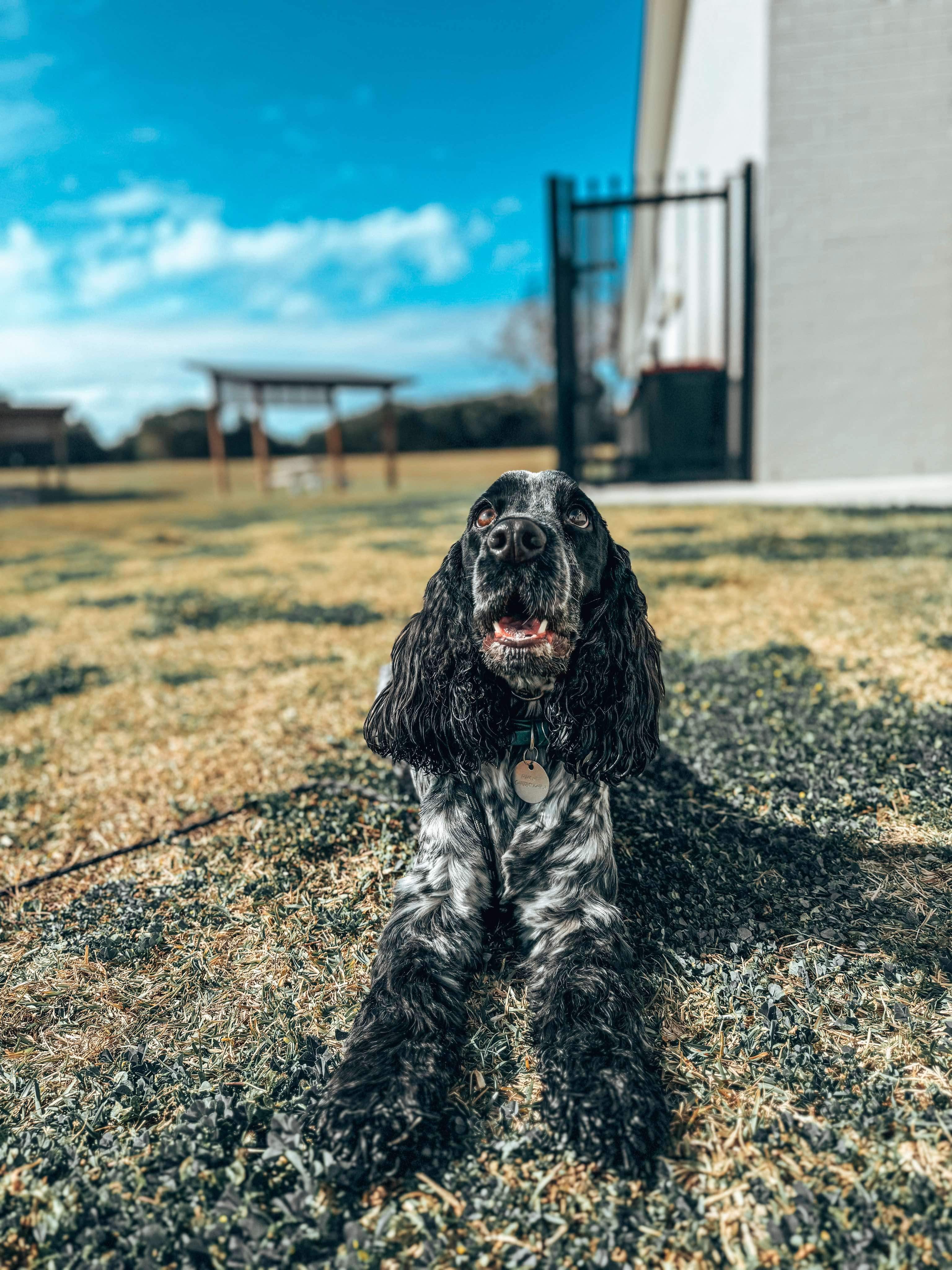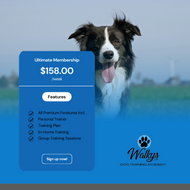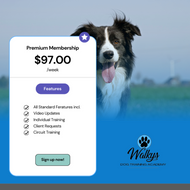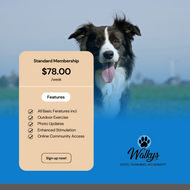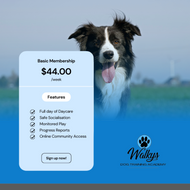August 14, 2024
Mastering Threshold Training: The Ultimate Guide to Teaching Your Dog Door Manners
In dog training, few skills are as essential and beneficial as threshold training. This vital practice ensures that your dog learns to wait patiently at doors, gates, and other boundaries, preventing dangerous dashes into traffic or unfamiliar areas. Mastering this skill can significantly enhance your dog’s behaviour and safety, as well as improve your overall relationship. This guide will delve deeply into threshold training, offering you detailed, step-by-step instructions to help your dog develop impeccable doorway manners.
Understanding Threshold Training
Threshold training teaches your dog to respect boundaries, whether it's a doorway, a gate, or the entrance to a room. The goal is for your dog to wait calmly and attentively for your permission before crossing these boundaries. This practice is not only crucial for safety but also reinforces your position as the leader in your dog's eyes, promoting better overall obedience.
Why Threshold Training Is Crucial
Threshold training goes beyond simple obedience; it’s a fundamental aspect of ensuring your dog's safety and enhancing its self-control. Many dogs have a natural inclination to bolt through open doors, which can lead to hazardous situations. By teaching your dog to pause and wait, you reduce the risk of accidents and instill a sense of discipline and patience. This training also provides mental stimulation for your dog, as they must learn to control their impulses and respond to your commands.
Essential Tools and Preparations
Before beginning threshold training, gather the necessary tools and prepare your environment to facilitate a smooth training process.
Tools You’ll Need
- Leash and Collar: A standard leash and collar are essential for maintaining control during the initial stages of training.
- High-Value Treats: Use small, tasty treats that your dog loves to reinforce positive behaviour.
Preparing the Environment
- Clear the Area: Ensure the training area is free from distractions. This helps your dog focus on the task at hand.
- Choose a Quiet Time: Start training when there are minimal disruptions, such as early in the morning or late in the evening.
Step-by-Step Threshold Training
Step 1: Establishing the Threshold
Begin by identifying the threshold you wish to train your dog to respect. This could be the front door, a gate, or even a specific room in your house.
- Approach the Threshold: With your dog on a leash, calmly approach the threshold. Stop a few feet before reaching it.
- Command ‘Wait’: As you near the threshold, firmly but calmly give the command, "Wait." Use a hand signal if your dog responds well to visual cues.
Step 2: Reinforcing the Wait
Reinforcement is key to ensuring your dog understands the importance of waiting.
- Pause Before the Threshold: Stand still at the threshold, holding the leash taut to prevent your dog from moving forward.
- Wait for Calmness: Observe your dog’s behaviour. Wait until they exhibit calmness, such as sitting or standing still without pulling on the leash.
- Reward the Behaviour: Once your dog is calm, praise them verbally and offer a treat.
Step 3: Gradual Release
Teaching your dog to wait is only part of the process; they must also learn to move through the threshold calmly upon your command.
- Give the Release Command: After your dog has waited calmly for a few moments, give a clear release command, such as "Okay" or "Come."
- Step Through Together: Walk through the threshold together, ensuring your dog moves at a controlled pace.
- Immediate Pause: Once through the threshold, have your dog pause again. This reinforces that even after crossing, calmness is required.
Step 4: Practice and Consistency
Repetition and consistency are critical in threshold training. Regular practice will help solidify the behaviour.
- Vary the Thresholds: Practice at different thresholds around your home and yard. This helps generalise the behaviour across various contexts.
- Increase the Duration: Gradually increase the time your dog must wait before being released. Start with a few seconds and work up to a minute or more.
- Practice Distance: As your dog becomes more confident, begin to introduce distance. Start by stepping a few feet away from your dog while they wait at the threshold. Gradually increase the distance, ensuring they remain calm and stationary until you give the release command. Always reward your dog for their patience before releasing them, reinforcing the positive behaviour and making the wait worthwhile.
- Introduce Distractions: Once your dog consistently waits and releases on command, introduce mild distractions, such as a person walking by or a doorbell ringing. Ensure your dog remains focused on waiting despite these distractions.
Step 5: Off-Leash Threshold Training
Once your dog is proficient on-leash, you can begin off-leash threshold training in a controlled environment.
- Start Indoors: Begin in a secure indoor area. Repeat the same steps, but without the leash.
- Increase Difficulty: Gradually move to more challenging thresholds, such as a front door that leads outside.
- Maintain Control: If your dog begins to break the threshold without permission, calmly redirect them and reinforce the wait command.
Troubleshooting Common Issues
Dog Bolts When Released
If your dog bolts through the threshold when released, go back a few steps in the training process. Reinforce calm behaviour before giving the release command and ensure your dog understands that the release doesn’t mean they can charge through.
Lack of Focus
If your dog struggles to focus on the task, consider increasing the value of the rewards or shortening the training sessions to keep them engaged. Practicing in a distraction-free environment initially can also help improve focus.
Difficulty with Distractions
If your dog has trouble maintaining calmness with distractions, work on desensitising them to these distractions gradually. Start with minor distractions and slowly increase the intensity as your dog becomes more proficient.
Advanced Threshold Training Techniques
Once your dog has mastered basic threshold training, you can introduce more advanced techniques to further enhance their discipline and obedience.
Distance Threshold Training
Practice having your dog wait at a threshold while you move away from them. This can help improve their impulse control and reinforce the wait command even when you are not directly beside them.
Multi-Dog Threshold Training
If you have multiple dogs, work on training them to wait at the threshold together. This requires a higher level of discipline and cooperation but can be extremely beneficial in a multi-dog household.
Adding Obstacles
Introduce obstacles near the threshold, such as toys or food bowls, to further challenge your dog’s impulse control. Ensure they maintain their wait despite the tempting items in their path.
Conclusion
Threshold training is a crucial skill that offers numerous benefits, from enhancing your dog’s safety to promoting better behaviour and obedience. By following the detailed steps outlined in this guide, you can effectively teach your dog to respect boundaries and wait calmly at doorways. Remember, consistency, patience, and positive reinforcement are key to successful training. With time and dedication, your dog will master threshold training, making your home a safer and more harmonious environment.

